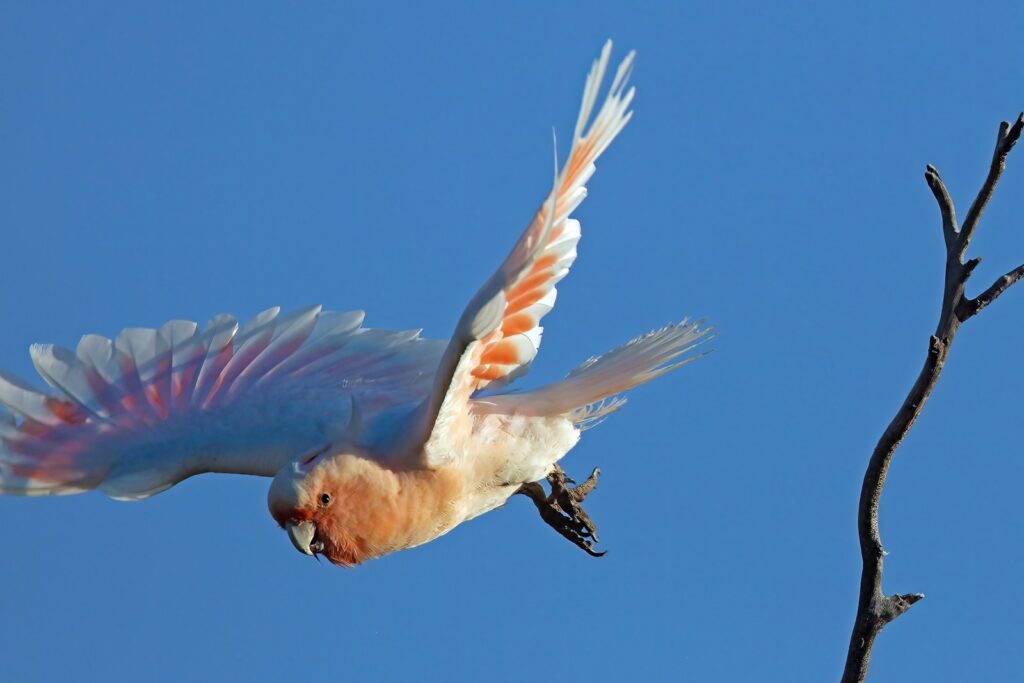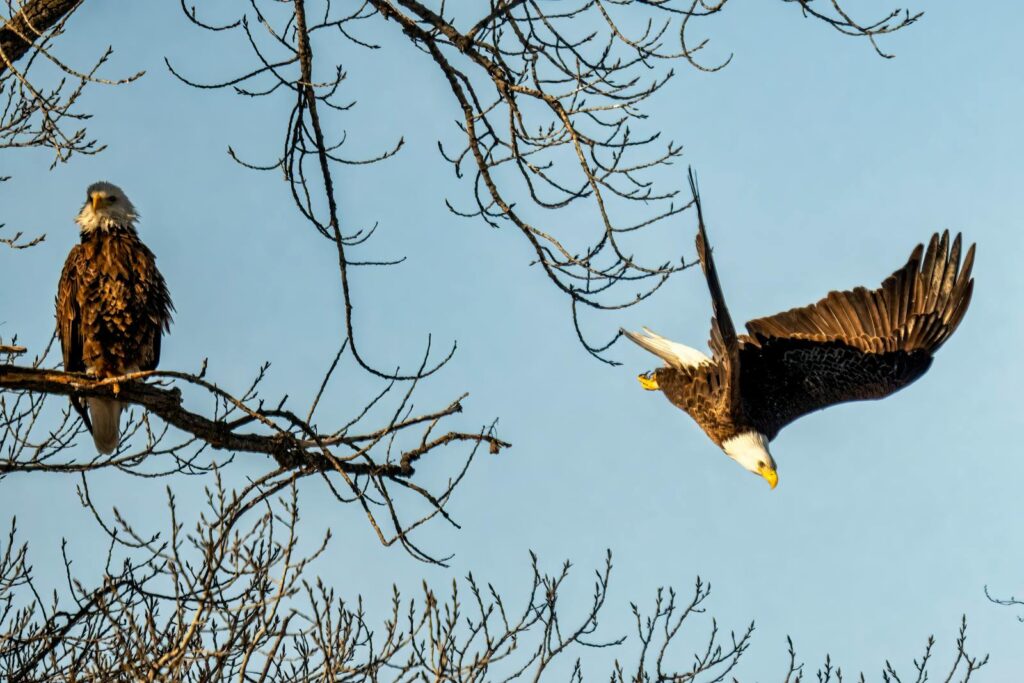Among the many marvels of the natural world, few phenomena are as fascinating as birds’ ability to navigate across vast distances with remarkable accuracy. Whether it’s the Arctic Tern’s 44,000-mile annual migration or a pigeon’s uncanny ability to find its way home, birds possess navigational abilities that have puzzled scientists for centuries. While birds use multiple techniques to navigate—including celestial cues and visual landmarks—one of their most extraordinary skills is their ability to sense and utilize Earth’s magnetic field. This invisible yet powerful force that surrounds our planet serves as a built-in compass for many bird species, guiding them across continents and oceans. The mechanics behind this magnetic sense reveal nature’s ingenuity and highlight the remarkable evolutionary adaptations that have allowed birds to master global navigation.
The Discovery of Magnetoreception in Birds

The scientific journey to understand birds’ magnetic sensing abilities began in the mid-20th century when researchers first proposed that animals might detect Earth’s magnetic field. In 1968, German scientist Wolfgang Wiltschko conducted groundbreaking experiments with European robins, demonstrating that they could orient themselves using only magnetic cues. By placing the birds in controlled environments where he could manipulate the magnetic field, Wiltschko showed that altering the artificial field’s direction caused predictable changes in the birds’ preferred direction. This revolutionary discovery opened up an entirely new field of research into what scientists now call “magnetoreception.” Over subsequent decades, researchers confirmed this ability in dozens of bird species, from tiny warblers to large seabirds, establishing magnetoreception as a widespread avian navigational tool. These early studies laid the foundation for our current understanding of how birds can “see” the invisible lines of magnetic force surrounding our planet.
Earth’s Magnetic Field: A Natural Navigation System

Before delving deeper into birds’ magnetic sensing, it’s essential to understand what they’re actually detecting. Earth’s magnetic field is generated by the movement of molten iron in the planet’s outer core, creating a global magnetic pattern that extends from the South Pole to the North Pole. This field provides two critical pieces of information to navigating birds: direction (compass orientation) and, in some cases, position (map information). The magnetic field lines run roughly parallel to Earth’s surface at the equator but dive into the planet at the poles, creating different inclination angles depending on latitude. The field also varies in strength across the planet’s surface, being generally stronger near the poles and weaker near the equator. These variations create a complex but consistent pattern that potentially allows birds to determine not just which way is north, but potentially where they are in relation to their destination—a truly remarkable natural GPS system that birds have evolved to exploit.
Cryptochromes: Light-Dependent Magnetic Sensors

One of the most fascinating discoveries in the field of avian magnetoreception involves special proteins called cryptochromes, found in birds’ eyes. These light-sensitive molecules undergo chemical changes when exposed to blue light, creating pairs of free radicals—molecules with unpaired electrons that are highly sensitive to magnetic fields. Scientists believe that when blue light hits these cryptochromes, they form what’s called a “radical pair,” and the subsequent chemical reactions are influenced by Earth’s magnetic field. The orientation of the bird relative to the magnetic field affects how these reactions proceed, potentially creating a visual signal that the bird perceives as a pattern overlaid on its normal vision. Imagine seeing a shadowy pattern that shifts as you turn your head—this might be similar to how birds “see” the magnetic field when flying. This mechanism is fascinating because it suggests birds may literally be able to see magnetic fields as a visual pattern, rather than sensing them through a separate sense like touch or hearing.
Magnetite-Based Magnetoreception

While cryptochromes represent one pathway for magnetic sensing, another equally important mechanism involves tiny magnetic particles called magnetite (Fe₃O₄) found in certain bird tissues. Researchers have discovered deposits of these iron-rich crystals in the upper beaks of many bird species, particularly in the ethmoid region where there are numerous nerve endings. These magnetite particles physically rotate like tiny compass needles when the bird changes position relative to Earth’s magnetic field, potentially stimulating nearby nerve cells to send signals to the brain. Unlike the light-dependent cryptochrome system, the magnetite-based system would work even in complete darkness, providing birds with a reliable backup system for night migration. Some studies have shown that when researchers apply a local anesthetic to birds’ beaks or attach small magnets to disrupt these sensors, their navigational abilities become impaired, strongly suggesting that these magnetite deposits play a critical role in magnetic field detection.
The Dual-Sensor Hypothesis

Rather than relying on a single method for detecting magnetic fields, evidence suggests that birds employ a sophisticated dual-sensor system. The light-dependent cryptochrome mechanism in the eyes appears particularly well-suited for determining compass direction, helping birds maintain a consistent heading during long-distance flights. Meanwhile, the magnetite-based system might provide more detailed information about field strength and inclination, potentially contributing to position determination—the “map” component of navigation. This redundancy offers significant advantages, allowing birds to navigate under various environmental conditions. During clear daylight, the cryptochrome system might predominate, while in cloudy conditions or at night, the magnetite system could take precedence. Recent research indicates that different brain regions activate when each system is in use, suggesting that birds can integrate information from both systems to create a comprehensive understanding of their position and direction. This dual approach demonstrates nature’s tendency to develop backup systems for critical survival functions like navigation.
The Role of the Trigeminal Nerve

The trigeminal nerve, the fifth cranial nerve in vertebrates, plays a crucial role in transmitting magnetic field information from magnetite-based receptors to a bird’s brain. This large nerve has branches extending into the beak region where many magnetite deposits are located, creating a direct pathway for magnetic sensory information. Researchers have confirmed the trigeminal nerve’s importance through studies where they surgically cut or anesthetized this nerve, resulting in birds losing certain aspects of their magnetic sensing abilities while still retaining others. Interestingly, electrophysiological recordings from the trigeminal nerve show increased activity when birds are exposed to changing magnetic fields, providing direct evidence of its sensory function. The specific region where this magnetic information is processed appears to be the trigeminal brainstem complex, which then connects to other brain areas involved in spatial navigation and memory. This complex neural pathway demonstrates how deeply integrated magnetic sensing is within birds’ nervous systems, representing an adaptation that evolved over millions of years.
Light-Dependent Magnetoreception and the Visual System

The connection between light and magnetic sensing in birds reveals one of the most unexpected aspects of avian navigation. For the cryptochrome-based system to function properly, birds need exposure to specific wavelengths of light, particularly in the blue-green spectrum. Researchers discovered this connection by placing migratory birds in orientation cages and manipulating the available light wavelengths. Under red light or in complete darkness, birds showed impaired compass orientation, while under blue and green light, their navigational abilities remained intact. This wavelength dependency has significant implications for wild birds, as it means their magnetic compass function could be compromised by light pollution in urban environments, which often contains high levels of red and yellow wavelengths. The brain region processing this visual magnetic information appears to be an area called “Cluster N,” located in the forebrain, which shows high activity during magnetic orientation behaviors. When this brain region is lesioned or temporarily deactivated, birds lose their ability to orient using magnetic cues, confirming its critical role in processing magnetic field information derived through the visual system.
Calibrating the Magnetic Compass

Birds’ magnetic sensing abilities become even more impressive when we consider how they calibrate this system against other navigational cues. Research indicates that young birds use celestial cues from the sun and stars to initially calibrate their magnetic compass during their first migration. This calibration process creates a reliable reference system that they can depend on when celestial cues are unavailable due to cloud cover or during daylight when stars aren’t visible. Sunset appears particularly important for this calibration, as the polarized light patterns visible during dusk provide consistent directional information that birds can correlate with magnetic readings. Studies with hand-raised birds show that without exposure to natural celestial cues during development, their magnetic orientation abilities may develop incorrectly or incompletely. This calibration isn’t a one-time event but appears to be an ongoing process throughout a bird’s life, with regular “cross-checking” between different navigational systems ensuring accuracy is maintained. This sophisticated integration of multiple navigational systems demonstrates the remarkable complexity of birds’ cognitive mapping abilities.
Magnetic Imprinting and Migration

One of the most fascinating aspects of birds’ magnetic navigation involves how young birds develop their navigational maps before their first migration. Research suggests that some species undergo a process called “magnetic imprinting,” where they memorize the specific magnetic field characteristics of their birthplace. This magnetic signature, including field strength and inclination angle, creates a reference point that birds can potentially use to locate their birth area when returning from migration. Experiments with birds raised in artificially altered magnetic fields show they later orient according to the artificial field they experienced during development rather than Earth’s natural field. This imprinting appears to occur during a critical period in the birds’ development, similar to how birds imprint on their parents for species recognition. For some long-distance migrants, evidence suggests they might inherit a genetic program that guides their first migration, with magnetic cues helping them execute this innate navigational blueprint. The precision of this system is remarkable—birds can return to the exact same nesting site year after year, sometimes after traveling thousands of miles, partly guided by their magnetic sense.
Magnetic Anomalies and Their Effect on Bird Navigation

Earth’s magnetic field isn’t perfectly uniform across the planet, and these variations can affect bird navigation in revealing ways. Natural magnetic anomalies—areas where the magnetic field deviates from expected patterns due to mineral deposits or geological features—can cause temporary disorientation in migrating birds. Researchers studying bird migration routes have observed that flocks sometimes make unexpected detours around large magnetic anomalies, suggesting they actively detect and respond to these disturbances. Human-made sources of magnetic disturbance also impact bird navigation, with radio towers, power lines, and urban areas sometimes creating enough electromagnetic interference to affect nearby flying birds. During geomagnetic storms caused by solar flares, when Earth’s magnetic field becomes temporarily distorted, researchers have documented increased navigational errors and disorientation among migratory birds caught in these events. These natural experiments provide further evidence for birds’ reliance on magnetic cues and highlight the potential vulnerability of their navigation systems to both natural and anthropogenic magnetic disruptions.
Species Differences in Magnetic Sensing

While magnetic sensing appears widespread among birds, the precision and importance of this ability varies considerably between species. Long-distance migratory birds like Arctic Terns, which travel from Arctic breeding grounds to Antarctic waters annually, show particularly acute magnetic sensitivity compared to non-migratory species. Homing pigeons, famously used for message delivery throughout history, possess extremely well-developed magnetic sensing abilities that allow them to return to their home loft from unfamiliar release points hundreds of miles away. Night-migrating songbirds rely heavily on magnetic cues since they can’t use visual landmarks in darkness, and research shows their magnetoreception systems are more sensitive than those of daytime migrants. Interestingly, some evidence suggests that water birds like ducks and geese may use magnetic cues differently than land birds, possibly because their migrations often follow coastlines and distinctive waterways that provide abundant visual landmarks. These species differences reflect evolutionary adaptations to each bird’s particular ecological niche and navigational challenges, with magnetic sensing most developed in those species that would benefit most from this remarkable ability.
Human Applications and Biomimicry

Birds’ remarkable magnetic sensing abilities have inspired scientists to develop new technologies based on these natural capabilities. Researchers are studying avian magnetoreception to create more efficient and resilient navigation systems that could potentially work without GPS satellites or in environments where GPS signals are blocked or unavailable. Military applications include development of navigation systems that can’t be jammed or intercepted, inspired by birds’ ability to navigate without external signals. In the medical field, understanding how biological systems detect magnetic fields could lead to advances in diagnostic imaging techniques and targeted drug delivery using magnetic nanoparticles. Conservation biologists are applying knowledge of birds’ magnetic sensing to design wildlife corridors and protected areas that account for migratory routes dictated by magnetic cues, helping preserve crucial flyways for endangered bird species. Perhaps most fascinating is the emerging field of “magnetogenetics,” where researchers are developing techniques to control specific cells in the body using magnetic fields, inspired in part by the cellular mechanisms birds use to detect Earth’s magnetic field. These diverse applications demonstrate how understanding birds’ natural abilities can drive innovation across multiple scientific disciplines.
Challenges and Future Research Directions

Despite significant advances in understanding avian magnetoreception, many mysteries remain unsolved. Scientists still debate the relative importance of the cryptochrome versus magnetite mechanisms, with some birds potentially favoring one system over the other. The exact neural pathways that process magnetic information in the brain require further mapping, as researchers seek to understand how magnetic data integrates with other navigational cues. Technological challenges persist in studying magnetoreception, as the sensory systems are extremely sensitive and easily disrupted by experimental conditions. Future research directions include developing non-invasive methods to monitor brain activity during natural navigation, creating more sophisticated computer models of how radical pair mechanisms might create visual magnetic perception, and investigating whether other animals (including humans) might possess vestigial magnetic sensing abilities. Climate change presents another area of concern, as geomagnetic field shifts over time could potentially affect migratory birds that rely on magnetic cues. As research techniques advance, particularly in neuroimaging and molecular biology, scientists hope to finally unravel the complete mechanism behind this remarkable sense that allows birds to navigate our planet with such precision.
Conclusion

The ability of birds to detect and navigate using Earth’s magnetic field stands as one of nature’s most elegant adaptations. Through a combination of light-sensitive proteins in their eyes and magnetic particles in their beaks, birds have evolved a sophisticated dual navigation system that guides them across vast distances with remarkable precision. This capability represents millions of years of evolutionary refinement, resulting in a navigational sense humans are only beginning to comprehend. As research continues to unravel the mysteries of avian magnetoreception, we gain not only a deeper appreciation for these remarkable creatures but also inspiration for new technologies and solutions to human challenges. Birds’ magnetic navigation serves as a powerful reminder of nature’s ingenuity and the extraordinary capabilities that can evolve when survival depends on finding one’s way home—no matter how far the journey.
